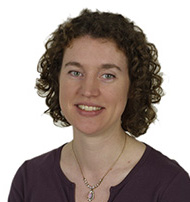Welcome to the fourth issue of Science in School Editorial article

Editor, Science in School
In our feature article, Nadia Rosenthal, one of two stem-cell researchers to deliver the 2006 Howard Hughes Holiday Lectures on Science for high-school students, discusses the ethics of using stem cells and live animals in research. She is not only a leading scientist, but also a talented artist – as you can see from our front cover. Ethical issues are also the focus of Democs, a card game to investigate and discuss controversial issues such as nanotechnology, genetically modified food or vaccination policies.
In the second part of our ‘Fusion in the Universe’ series, Henri Boffin and Douglas Pierce-Price investigate our celestial ancestry. Rachel Dodds also looks to the heavens, with a project allowing school classes to control telescopes via a computer link and to take their own astronomical pictures. Or, if you are feeling more Earth-bound, why not follow Mark Tiele Westra’s simple instructions for building your own spectrometer, and start investigating the hidden beauty and complexity of white light?
The natural world can also provide inspiration for future scientific developments. Giovanna Cicognani and Montserrat Capellas describe recent research into spider silk, man-made versions of which could be used to repair ligaments or construct lightweight armour. Taking a larger-scale look at biomimetics, Julian Vincent explains how imitating biological systems may provide a sustainable answer to many of our engineering challenges.
Looking back in history, Angelika Börsch-Haubold investigates how our modern understanding of hallucinogenic plants casts light on the persecution of ‘witches’. And Isabella Marini demonstrates how students can follow in the footsteps of 19th-century scientists and discover for themselves what makes enzymes so special.
Of course, many of our articles present different ways to enthuse school students in science. In this issue, ideas include Canadian school science fairs, the Belgian scientists@work school project, French multimedia science workshops, the European CISCI project to use movie clips in lessons, and the schools outreach work of French toothpaste-researcher, Linda Sellou.
We hope you enjoy these and other articles in this issue and we would be interested to hear how you use them. If you adapt articles from Science in School to use as teaching materials, perhaps you would like to share your work with other teachers by submitting those materials for publication. If you would like to discuss the adaptation with us, we would be delighted to hear from you.
As you will see from our events list, there are many opportunities for teachers to share their knowledge and learn from each other. If you organise events that you would like listed in Science in School, just send us brief details (date, location, title, abstract, website and contact email address). If you are able to distribute flyers and copies of Science in School to participants, please let us know.
We also welcome suggestions for future content. Perhaps you know (or are) a particularly inspiring science teacher, suitable for our ‘teacher profile’ section? You might like to suggest a high-profile scientist to be interviewed for a feature article, or you may know a young, enthusiastic scientist whom we should interview for the ‘scientist profile’ section. Please email us your suggestions.
Finally, do leave your comments about our articles online; there is a comments link at the end of each article. You can use this feature to tell us and other readers what you enjoy about the articles or how you would adapt them, perhaps to make them more applicable in your country.





